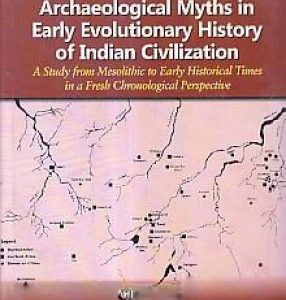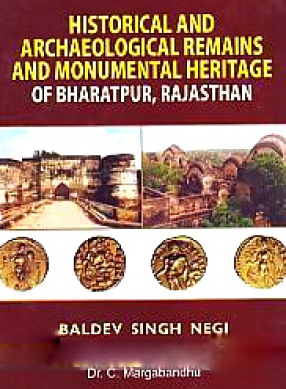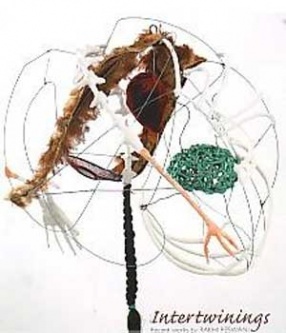The six centuries from circa 300 B.C-300 A.D. covered in this book presents a vast vista of the life of the people of central and western India and the Deccan upto the south-east coast from the Mauryan times through the Sunga, Kushana, Kshatrapa and Satavahana ruling dynasties. The period represents the emergence of writing through a definite script propagating heterodox religions viz., Buddhism and Jainism, opening up of trade routes, formation of merchant guilds, etc.,all these contributing to the change and advancement of urbanisation, culture, life pattern, foreign trade as reflected in the artefacts revealed from excavations. The numerous excavations conducted during the past three decades in this region have yielded structures, artefacts and innumerable objects reflecting the life style of the people of this region. Here an attempt has been made to reconstruct the material culture of the times on the basis of this vast mass of published archaeological data in the excavation reports. The book has been divided into 12 chapters, beginning with a prologue and ending with an epilogue. Chapters 1 and 2 deal with the general history of the period with geographical and archaeological setting as a backdrop. Town planning, cities and villages and the concomitant types of architecture, civil, military and religious are embodied in the third chapter. The variety of building materials and other contrivances have been detailed and classified in relation to chronology. Chapters 4 and 5 cover the aspects of economy, art and religion with a brief description on the existing transport and communications, trade and caravan routes – both inland and foreign, weights and measures, coins as a means of exchange and other essentialities of trade and commerce. Domestic equipment vessels of different materials and stone utensils etc., are covered in the next. Chapter 7 exhaustively deals with toilet, dress and ornaments; apart from toiletry – caskets, combs, mirrors, hair pins, skin rubbers, etc., the mode of dress on the basis of evidence of cloth, the equipments for spinning and weaving have also been described. Jewellery both complete and component pieces havebeen classfied in great detail. Some techniques seemingly of foreign origin are also traces out. Chapters 8 and 9 deal with the games and toyas, tools of artisans and agricultural and house hold or domestic implements and various other offensive and defensive with various techniques of the making of the material equipment of the times with an emphasis on various stages of technological growth in the penultimate chapter, the remains of fauna and flora as obtained from excavation would suggest the dietary habits of the people besides the environement in which they lived.

Archaeology of the Satavahana Kshatrapa Times
$40.50
$45.00
In stock
Free & Quick Delivery Worldwide
All orders amounting to US$ 50 or more qualify for Free Delivery Worldwide. For orders less than US$ 50, we offer Standard Delivery at $14 per book.
ABOUT THE AUTHOR C Margabandhu
Chedarambattu Margabandhu (b-1936) an alumni of the Madras Christian College, Tambaram took his M.A. degree in History in 1959 from the Madras University. He was awarded the Northwick and N.N. Airavatham Prizes of the Madras University and the Kellett Prize of the Madras Christian College for the best performance in B.A. (Hons.) and obtaining first rank in the University. He was awarded the Post-Graduate Diploma of the School of Archaeology, Archaeological Survey of India in 1962. The Nagpur University awarded Ph.D. degree in 1973 for his thesis “Material Culture of central and Western India and the Deccan from c. 300 B.C. – 300 A.D.†In 1962, he joined the Archaeological Survey of India and ever since for the past twenty-two years, he has participated in several excavations such as at Kalibangan, Paiyampalli, Pauni, Surkotda, Bakraur (Sujata-Kuti), Mathura, Karvan, Anhilvad Patan, Fatehabad, etc., besides several field explorations. His special field of study consists of interpretation of archaeological artifacts and other excavated data belonging to the Early Historic Period with a bearing on the material culture of the times. He has contributed more than forty papers of intrinsic value to the various Journals and Seminars on archaeology, art, architecture and aspects of material culture and technology. Presently he is the Superintending Archaeologist in the Archaeological Survey of India, Delhi Circle, with headquarters at New Delhi.
reviews
0 in total
Review by Anonymous
Be the first to review “Archaeology of the Satavahana Kshatrapa Times” Cancel reply
You must be logged in to post a review.
Bibliographic information
Title
Archaeology of the Satavahana Kshatrapa Times
Author
Edition
1st Ed.
Publisher
Length
xvi+398, 1 Map; 21 Figures; 10 Plates; Index 26 cm
Subjects






There are no reviews yet.